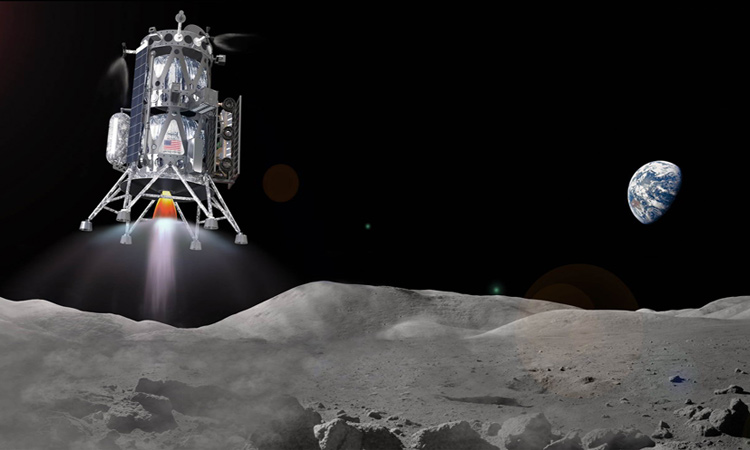Feature
Back to the Moon—and Beyond
Optics and photonics technology will play a key role in NASA’s efforts to put more human footprints on the lunar surface—and to use it as a base for farther-flung expeditions.
 Concept illustration for a commercial lunar lander by Intuitive Machines. [Courtesy of Intuitive Machines]
Concept illustration for a commercial lunar lander by Intuitive Machines. [Courtesy of Intuitive Machines]
In July of this year, the world celebrated the 50th anniversary of Neil Armstrong’s first walk on the moon. And, looking ahead, the U.S. space agency, NASA, has once again trained its sights on the lunar surface. It already has begun implementing the Commercial Lunar Payload Services (CLPS), an aggressive program to improve scientific understanding of the moon via dozens of scientific payloads. The eventual goal: Land astronauts again on the moon and transform the moon into a permanent life-supporting facility—self-sufficient in areas such as water and rocket fuel—for use as a staging area to Mars and beyond.
…Log in or become a member to view the full text of this article.
This article may be available for purchase via the search at Optica Publishing Group.
Optica Members get the full text of Optics & Photonics News, plus a variety of other member benefits.
